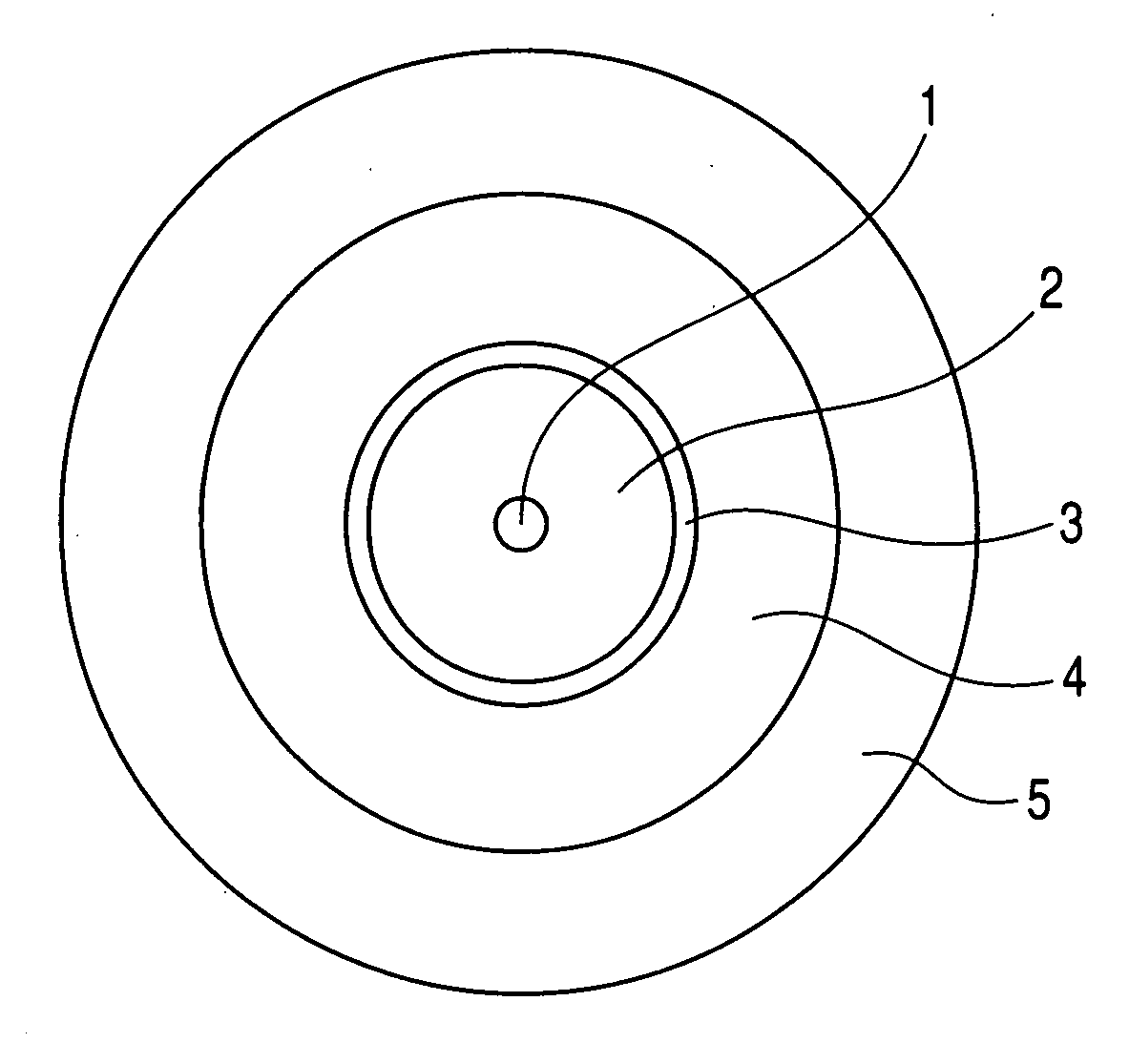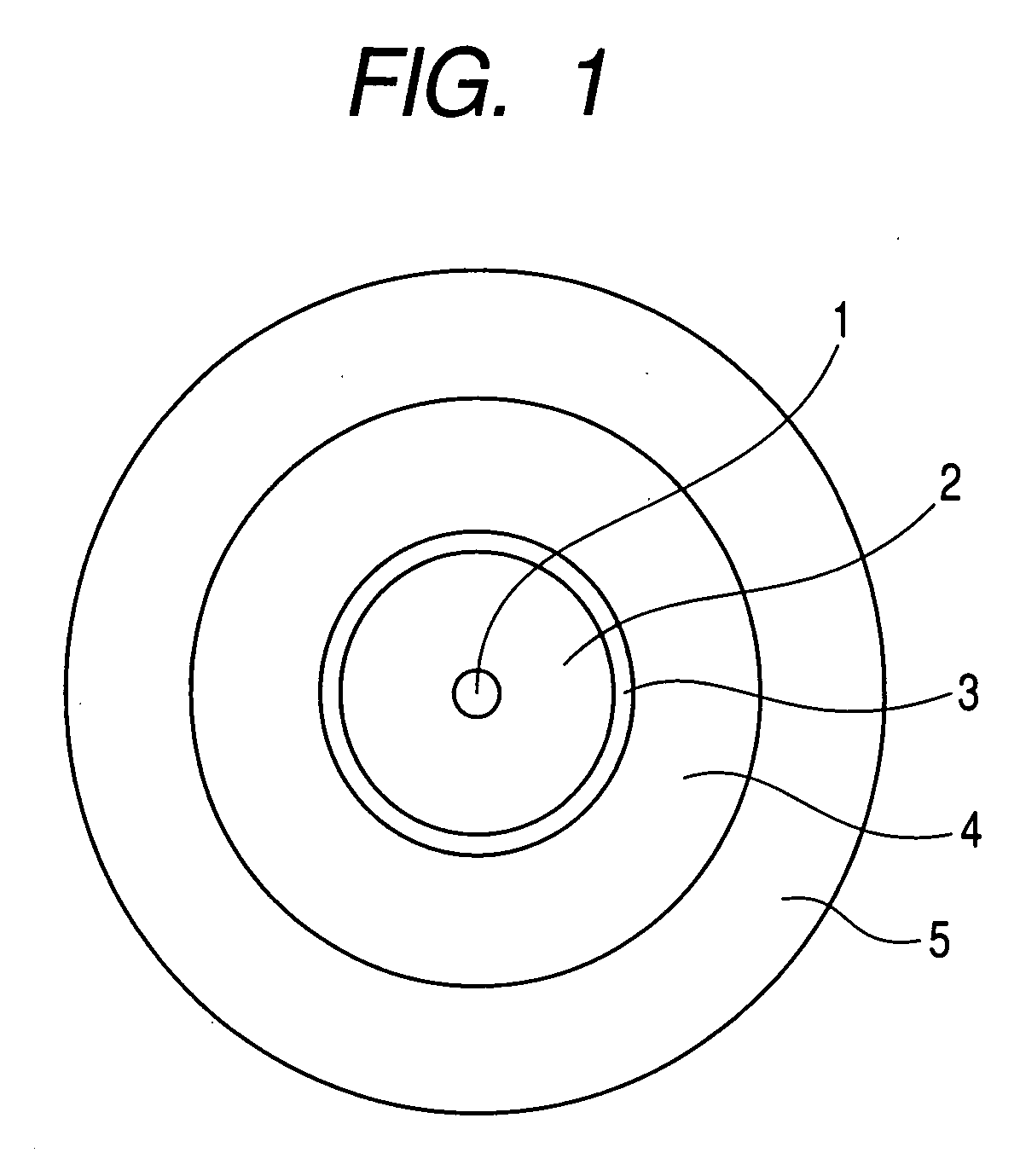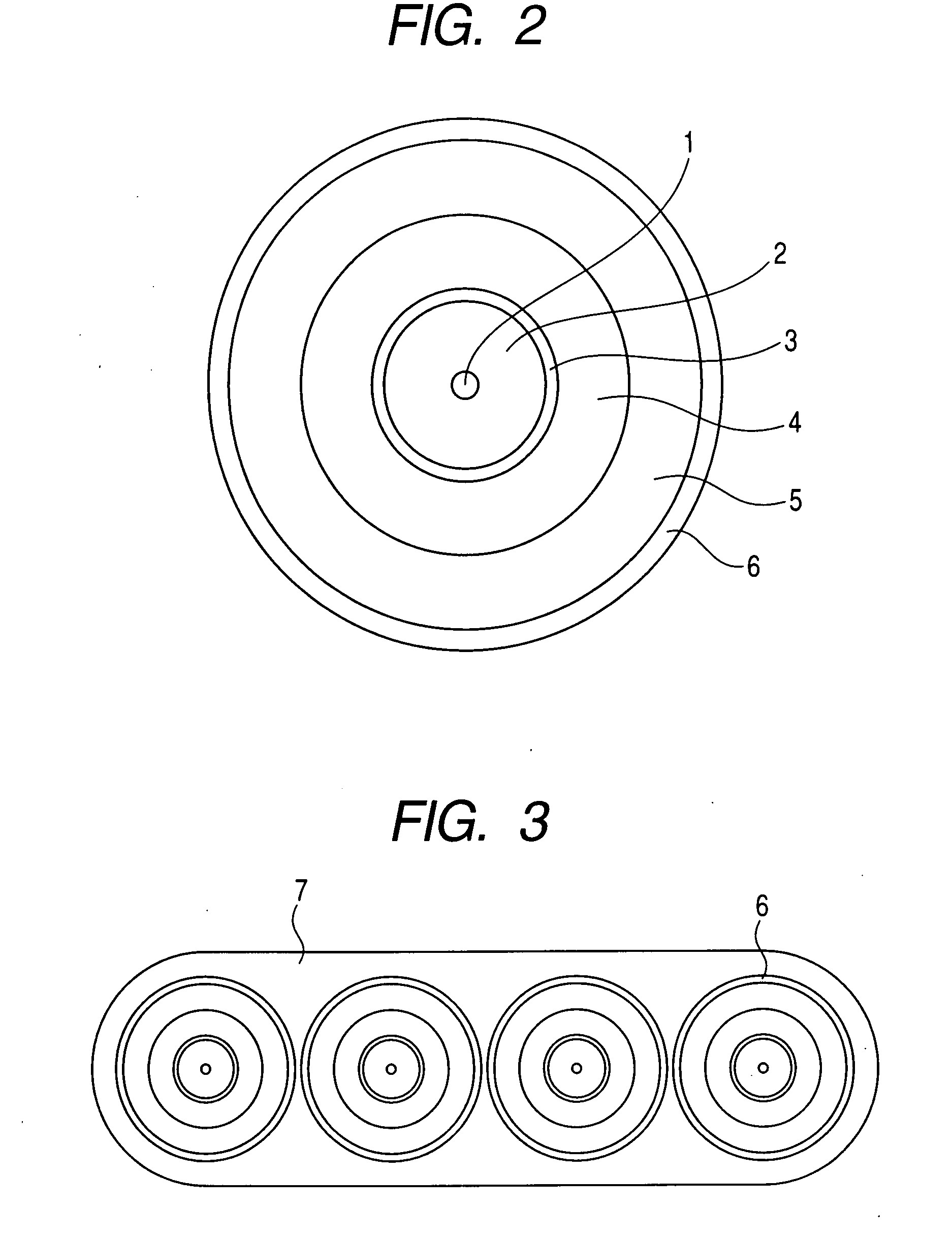Optical Fiber
a technology of optical fiber and protective layer, applied in the field of optical fiber, can solve the problems of increasing the transmission loss by a micro bending, the constraint of production also became large, and the inability to help becoming so complicated, so as to improve the micro bending resistance characteristic, improve the adhesion of the primary protective layer to the glass optical fiber, and increase the transmission loss
- Summary
- Abstract
- Description
- Claims
- Application Information
AI Technical Summary
Benefits of technology
Problems solved by technology
Method used
Image
Examples
Embodiment Construction
[0040]An optical fiber of the present invention will be described below in detail using drawings.
[0041]FIG. 1 is a cross-sectional schematic diagram showing one example of an optical fiber of the present invention. As illustrated in FIG. 1, the optical fiber of the present invention has a glass optical fiber which has a core 1, passing an optical signal, in a center portion and a cladding 2 in its outer periphery, a primary protective layer 3 made to coat the glass optical fiber, a secondary protective layer 4 applied on this primary protective layer 3, a third protective layer 5 applied to an outer periphery of this secondary protective layer 4, and is characterized in that glass transition temperature of the primary protective layer 3 is made to be higher than −20° C. and 10° C. or lower, glass transition temperature of the secondary protective layer 4 is made to be −10° C. or lower, and the glass transition temperature of the primary protective layer 3 is made higher than that of...
PUM
| Property | Measurement | Unit |
|---|---|---|
| glass transition temperature | aaaaa | aaaaa |
| glass transition temperature | aaaaa | aaaaa |
| glass transition temperature | aaaaa | aaaaa |
Abstract
Description
Claims
Application Information
 Login to View More
Login to View More - Generate Ideas
- Intellectual Property
- Life Sciences
- Materials
- Tech Scout
- Unparalleled Data Quality
- Higher Quality Content
- 60% Fewer Hallucinations
Browse by: Latest US Patents, China's latest patents, Technical Efficacy Thesaurus, Application Domain, Technology Topic, Popular Technical Reports.
© 2025 PatSnap. All rights reserved.Legal|Privacy policy|Modern Slavery Act Transparency Statement|Sitemap|About US| Contact US: help@patsnap.com



